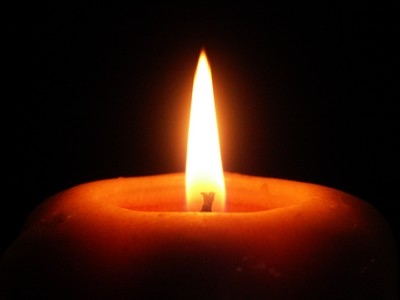Shiva
Shiva is the first, intense stage of mourning. Meaning seven in Hebrew, shiva is observed for seven days after the burial. The first day of shiva is the day of the burial. The last day of shiva traditionally ends shortly after morning prayers (shacharit) are recited.
During shiva, members of the immediate family (a parent, sibling, spouse, or child) stay inside and are comforted by visitors. Traditionally, these visitors also help form the minyan for morning and afternoon prayers.
Although Shabbat is counted as one of the days of shiva, some rituals of shiva are not observed on Shabbat. For example, the torn garment or ribbon is not typically worn on Shabbat. Those who usually attend synagogue will leave the house to attend prayers on Shabbat during shiva. Formal mourning resumes at nightfall on Saturday, when Shabbat ends.
The timing of shiva when there is a holiday may vary. Traditionally, shiva was ended when a holiday fell within the seven days. For example, if a burial occurred three days before Rosh Hashanah, shiva would end at sunset on the night before Rosh Hashanah as if the full seven days of shiva had been observed. It’s best to consult a rabbi or funeral director if a burial occurs near a holiday.
Shiva is usually observed in the home of the person who has died or of a close relative. Traditionally, when mourners return to the house after the funeral and burial, they light a candle that burns for the entire seven days. The candle symbolizes the soul of the deceased and the light of God. It is similar to the one that is lit annually at Yahrzeit, the Jewish calendar anniversary of the death.
After returning from the cemetery, mourners traditionally eat a meal of condolence. This includes eggs, symbolizing fertility and life, and bread, symbolizing life and sustenance. Usually, friends and neighbors provide the food for this and other meals during shiva. It’s a mitzvah–a good deed–to bring food to mourners as it relieves them of some of their everyday duties.
Traditionally, mirrors are covered in a shiva house showing that the mourners have withdrawn from worldly concerns such as their personal appearance. In some homes, this tradition is not followed or is symbolically observed by covering only the front entrance mirror.
In one tradition, mourners sit on lower chairs than their visitors. They are not meant to be uncomfortable but simply lower than the others. Of course, mourners are free to walk around the house, stand, lie down or sit as they please. Traditionally, the mourner does not rise to greet a visitor regardless of the importance of the visitor. In some customs, the mourners refrain from wearing leather shoes. Some wear shoes of canvas or cloth. Others wear no shoes at all during shiva. Visitors may wear whatever footwear is appropriate, but should not wear non-leather shoes unless appropriate with the outfit worn.
Mourners should expect many visitors during shiva, as one of the most important mitzvot for others is to pay a condolence call. Visitors are expected to console the mourners and let the mourners lead the conversation. For those conducting morning and evening prayers at the shiva house, visitors were necessary to ensure a minyan at these services. Usually, gifts or flowers are not brought to a mourner but the food is almost always welcome. Some people make donations to a favorite charity in the name of the deceased.
During shiva, the mourners traditionally do not leave the house, work or visit others. This is one reason for the need for a minyan in a traditional shiva house; the prayers that normally would be said in the synagogue are said at the person’s home. When mourners arrive at synagogue on the first Shabbat after the burial, they are welcomed with the traditional greeting, “May God comfort you along with all the mourners of Zion and Jerusalem.”
At the end of shiva, the mourners may walk once around their block. This symbolizes they are ready to resume daily life. Although they are not yet finished mourning, they have ended the first stage of mourning.

